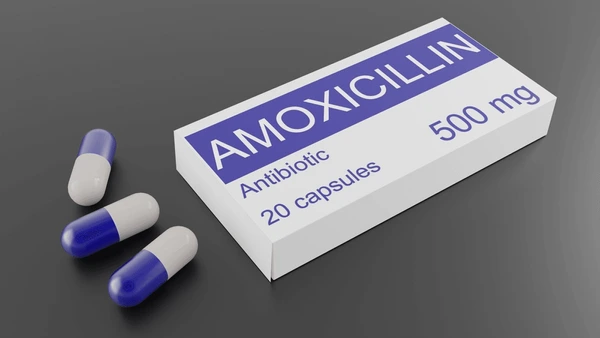Amoxicillin kills bacteria by interfering with their ability to form cell walls, which are essential for their survival. It is bactericidal, meaning it actively destroys bacteria rather than just inhibiting their growth.
✅ Common Uses of Amoxicillin
Amoxicillin is used to treat many bacterial infections, such as:
| Condition | Details |
|---|---|
| Respiratory tract infections | e.g., bronchitis, pneumonia, tonsillitis, sinusitis |
| Ear infections (Otitis media) | Especially in children |
| Throat infections | Such as strep throat caused by Streptococcus pyogenes |
| Urinary tract infections (UTIs) | Mild to moderate infections |
| Skin and soft tissue infections | Including cellulitis |
| Dental infections | For abscesses and infections caused by oral bacteria |
| H. pylori eradication | Used with other drugs to treat stomach ulcers |
| Gonorrhea (in some cases) | When other antibiotics are not suitable |
| Prophylaxis before dental procedures | In patients with heart valve issues (to prevent endocarditis) |
📋 Forms and Dosage
- Forms: Capsules, tablets, chewable tablets, oral suspension
- Dosage varies by age, infection type, and severity:
- Adults: 250–500 mg every 8 hours, or 500–875 mg every 12 hours
- Children: Based on body weight (typically 20–40 mg/kg/day in divided doses)
Always follow a healthcare provider’s prescription.
⚠️ Common Side Effects
Most people tolerate amoxicillin well, but it may cause:
| Common Side Effects | Frequency |
|---|---|
| Nausea | Common |
| Diarrhea | Common |
| Rash (mild) | Occasional |
| Vomiting | Sometimes |
| Abdominal pain or discomfort | Mild |
🚨 Serious Side Effects (Rare but Important)
| Condition | Description |
|---|---|
| Allergic reaction (anaphylaxis) | Severe rash, swelling of face/lips, difficulty breathing (medical emergency) |
| Severe skin reactions | e.g., Stevens-Johnson syndrome (rare) |
| Clostridioides difficile infection | Prolonged diarrhea, may indicate serious colon inflammation |
| Liver dysfunction | Elevated liver enzymes, yellowing of skin/eyes (jaundice) |
| Seizures | Rare, more likely in patients with kidney problems or high doses |
❗️Warnings & Precautions
- Allergy to penicillin or cephalosporins → Avoid amoxicillin
- Kidney disease → May require dose adjustment
- Pregnancy/Breastfeeding → Generally considered safe, but consult a doctor
- Interaction with other drugs:
- May reduce effectiveness of oral contraceptives
- Interacts with methotrexate, allopurinol, and some anticoagulants
🔒 Storage and Handling
- Store tablets and capsules at room temperature (15°C–30°C)
- Refrigerate oral suspension; discard after 14 days
- Shake the suspension well before use
📌 Summary
| Category | Details |
|---|---|
| Class | Penicillin-type antibiotic |
| Used for | Respiratory, ear, throat, UTI, skin, dental infections |
| Common side effects | Nausea, diarrhea, rash |
| Serious risks | Allergy, C. difficile infection, liver issues |
| Precautions | Allergies, kidney disease, pregnancy considerations |
